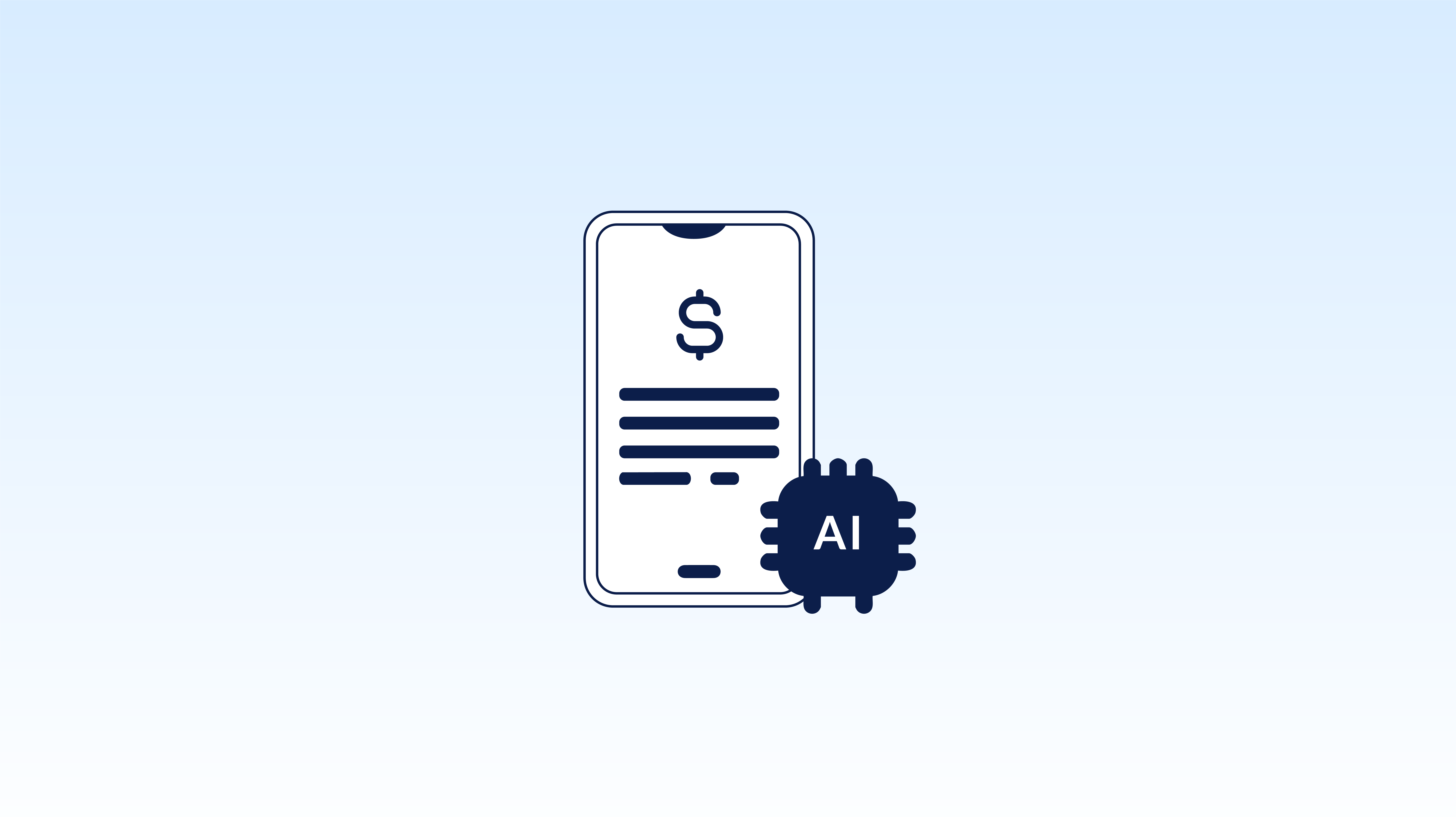Automated Accounts Receivable Programs: Cutting DSO by 30% in Six Months
In today’s economy, speed to cash is as important as speed to market. Companies that let receivables linger for 60, 75, or even 90 days are putting...

Accounts payable (AP) has become a major focal point for digital transformation, especially as organizations face rising pressure to maintain accuracy and streamline operations. Additionally, as fraud becomes more sophisticated, companies must adopt advanced technologies to safeguard their assets and data from cybercriminals.
For these reasons (and more), artificial intelligence (AI) is emerging as a key enabler in revolutionizing AP processes by promising enhanced efficiency, fewer errors, and stronger security.
This article will explore the evolution of AI in AP, the various types of AI available, its applications in AP processes, and what the future may hold for AI in this critical business field.
The journey of AI in accounts payable has been marked by gradual adoption and growing sophistication over a number of decades. Initially, AI applications only focused on specific tasks like optical character recognition (OCR) to digitize invoice data, but today, AI encompasses various technologies with distinct capabilities. Here’s an overview of the primary AI technologies transforming AP:
Machine Learning (ML). Machine learning algorithms enable systems to learn from historical data and then improve over time. In accounts payable, ML identifies patterns in invoices, transactions, and approvals to help reduce errors and predict transactional outcomes. Additionally, because it analyzes historical data, ML can also assist in cash flow forecasting and expense predictions.
Optical Character Recognition (OCR). OCR technology converts scanned documents and images of invoices into machine-readable text, allowing AP departments to automate the data extraction process. As a result, this technology not only reduces the need for manual data entry, but it also enables faster and more accurate processing.
Robotic Process Automation (RPA). RPA involves the use of software bots that mimic human actions to perform repetitive tasks. In accounts payable, RPA can handle processes such as invoice matching, approval routing, and data entry while integrating with other systems to perform routine tasks.
Natural Language Processing (NLP). NLP enables systems to understand and interpret human language, so it helps analyze unstructured text such as vendor emails and inquiries. NLP can also streamline communication between vendors and AP departments by providing automated responses to frequently asked questions.
Predictive Analytics. This aspect of AI uses data-driven models to predict future outcomes including cash flow needs, potential errors, and fraudulent activities. Predictive analytics adds value to AP and contributes to smarter financial planning by proactively identifying issues before they escalate.
As AI technologies advance further, organizations can leverage these tools not only to streamline workflows but also to enhance decision-making and build more resilient AP functions.
With so many new tools available, businesses are now using AI to automate and optimize specific tasks within accounts payable, and here are ten ways AI is transforming this critical department:
One of the most time-consuming and error-prone aspects of AP is manual data entry. But AI-driven OCR technology automatically extracts information from invoices (vendor details, amounts, payment terms) and inputs it directly into the AP system. Besides saving employees a lot of time, this automation capability reduces the likelihood of human errors in account processing.
Invoice approval is a multi-step process that involves different stakeholders across an organization, and traditionally, this part of invoice processing can be slow due to routing lapses, missing documentation, and approver inquiries.
AI enables automated routing and prioritization of invoices based on factors like urgency, amount, and vendor history. By setting predefined rules, AI can manage the approval process, send reminders, and escalate delays when necessary, assuring faster approvals and fewer bottlenecks in the payment cycle.
In traditional AP processes, exceptions—such as missing information or discrepancies in invoices—require manual intervention, which delays processing. In fact, 47% of all AP and finance leaders responding to a 2024 survey by Ardent Partners said that high percentages of invoice exceptions were top challenges in their organizations.
Fortunately, AI streamlines exception handling by identifying common patterns that trigger exceptions and suggesting solutions based on historical data. By learning from previous resolutions, AI can reduce the frequency of exceptions and expedite the handling of complex cases.
Two-way and three-way matching are essential functions in AP for ensuring accuracy and preventing overpayments. Not only that, but they help protect against fraud and ensure adherence to internal policies and regulatory standards. AI-powered systems can also cross-reference purchase orders, invoices, and receive documents in real-time in order to ensure that information aligns before approving payment.
By automating processes like invoice matching and approval, AI ensures that vendors are paid on time and with minimal errors. Additionally, AI-driven insights into vendor performance and payment history can help AP teams negotiate better terms and foster stronger partnerships with vendors, ultimately contributing to long-term business growth. To this point, a PYMNTS survey of over 400 executives reported that over 70% of mid-sized firms with full AP automation experienced higher vendor satisfaction.
AI has proven valuable in processing employee expense reports by extracting data from receipts and expense submissions using the tools ML and OCR. This process both ensures compliance with company policies and flags any outliers or suspicious claims. Because these combined AI tools have the ability to cross-check data with pre-established guidelines and provide real-time feedback to employees, finance teams save time and benefit from the enhanced accuracy.
As fraud becomes more complex, AI-driven fraud detection systems have become critical in identifying suspicious transactions. With the ability to analyze patterns and anomalies in data, AI can detect unusual invoice amounts, repetitive payments to the same vendor, and other red flags. In addition to AI, predictive analytics further strengthen data security by proactively identifying potential fraud risks and giving organizations time to respond before fraud can occur.
Managing cash flow is a fundamental task for any AP team, and AI-driven predictive analytics helps finance teams anticipate cash flow requirements based on historical data and current trends. The resulting accurate cash flow forecasting enables businesses to plan better, avoid cash shortages, and optimize working capital in order to support strategic decision-making and growth.
Human errors in AP processes are generally costly, and according to the Institute of Finance and Management (IOFM), at least 39% of invoices contain errors. AI systems can automatically scan for errors, however, and alert AP teams before payments are processed. In the end, this proactive error detection reduces costly mistakes and enhances the accuracy of financial data.
Audits are an integral part of financial compliance, but they can be time-consuming, nerve-wracking, and frustrating for AP employees. AI simplifies audit preparation with its ability to automatically organize invoices, payment records, and other relevant documents into digital formats. AI tools also ensure that records are accessible and traceable so employees can spend less time locating documents and verifying transactions during an audit.
The future of AI in AP is full of promise, driven by emerging technologies and innovative advancements that are set to reshape AP automation. One key trend likely to define the future of AI in AP includes advanced AI models with enhanced predictive analytics. This combination will allow systems to incorporate a wider range of financial data and behaviors for better cash flow forecasting, fraud detection, and risk assessment.
A second area of growth is self-learning AI, which could bring continuous improvement to AP automation by adapting independently to new business practices, regulatory changes, and market conditions. Blockchain integration could also play a key role in AP automation by enhancing transparency, security, and traceability in AP processes through decentralized ledgers.
Enhanced fraud detection is an additional expected development, where AI-driven behavioral analytics will monitor vendor and employee activity to identify anomalies and improve security.
Overall, as AI continues to evolve, the potential for higher efficiency and security within accounts payable will grow significantly. By adopting these emerging technologies, businesses will be able to build a more agile and resilient AP function that drives sustainable growth and manages risk effectively.
The integration of AI into accounts payable is redefining how organizations approach financial operations, from automating routine tasks to enhancing fraud detection, assuring compliance, and more.
If your business is ready to advance operations with new AI tools, please contact CloudX to discuss our invoice and payment processing solutions and see how AI can work in your business.

In today’s economy, speed to cash is as important as speed to market. Companies that let receivables linger for 60, 75, or even 90 days are putting...

Managing operational costs today often means balancing operational costs against tight margins, making it essential to join a group purchasing...